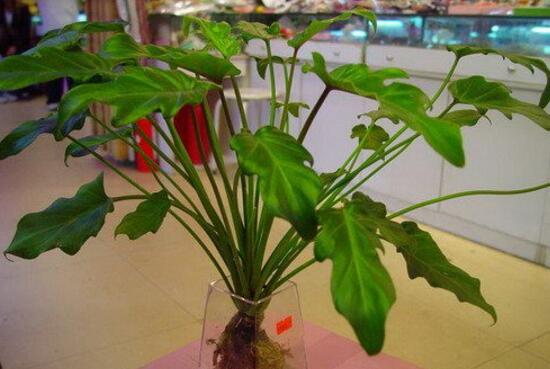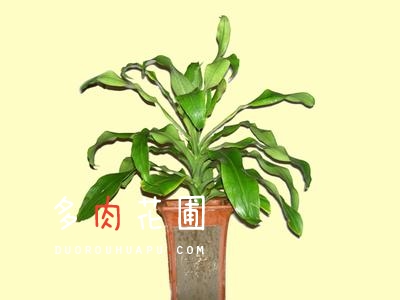How to propagate and cultivate Brazilian wood
Brazilian wood Chinese name fragrant dragon blood tree, alias Brazilian iron tree, Brazilian millennium wood, Phnom Penh fragrant dragon blood tree, is a plant of the genus Liliaceae. Evergreen trees, neatly shaped, tall and straight stems. The leaf cluster is born at the top of the stem, 40-90 cm long and 6-10 cm wide, the tip is slightly obtuse, curved into a bow, with bright yellow or milky stripes; the leaf margin is bright green, undulating and glossy. The flowers are small. Yellowish green, fragrant.
Brazilian wood is native to the tropics. Like sufficient light, high temperature, high humidity environment, shade-resistant, dry-resistant, in the bright scattered light and the dry environment of the northern room, grow well.
Brazilian wood is propagated by cutting method. The branches pruned from the branches with poor plant shape were cut into 5-10 cm segments and cut upright or recumbent on the cutter with coarse sand or vermiculite as the medium. Water culture can also be used to promote its rooting. The specific method is to cut off the stem, into the water, the cross section to be smooth, the upper end to prevent water evaporation can be coated with wax, which is particularly important in the dry season, the lower end is immersed in water 2-3 cm, the temperature is above 25 ℃, water and containers should be kept clean. The top with leaves can take root faster, and it can take root in 3-4 weeks, while the stem segment can take root slowly, sometimes it takes 2-3 months to grow new roots and buds. Management technology: as long as the temperature and other conditions are suitable, Brazilian wood can grow all year round.
Summer high temperature, need proper shade, winter room temperature should not be lower than 5 ℃, but it is best to make it dormant in winter, dormancy temperature is 13 ℃, the temperature is too low, leaf tip and leaf edge will appear chloasma. Brazilian wood in the room should be in a place with plenty of light. If the light money is too weak, the markings on the leaves will turn green, the basal leaves will yellowing, and lose the ornamental value. Water quality should be kept clean during the cultivation period. Water should be watered twice a week to prevent tree trunks from rotting. When it is hot in summer, spray can be used to improve the air humidity and spray water on the leaves to keep it moist.
Brazilian wood in the growing period should be appropriate extra-root topdressing, with thin nutrient solution sprayed leaves, once every semimonthly. After several years of cultivation, the plant is too tall or the leaves of the lower part of the stem fall off, and when the plant shape is poor, it should be pruned. Change the basin or soil every early spring. Potted Brazilian wood, if the environment is not suitable, there will be red spiders, thrips, shell insects and other harm. In addition, excessive ventilation, drought, irregular watering and excessive fertilization can cause leaf tip scorch.
Brazilian wood is quite popular indoor large potted flowers and trees, especially in the wider living room, study, living room display, elegant style, simple, and with southern flavor. It is a world-famous new generation of indoor foliage plants with beautiful and neat plant shape.
How to propagate and cultivate Brazilian wood mainly by cutting propagation. A sturdy perennial stalk can be cut into many segments and then planted upright and shallowly in plain sand, with only one stalk in each small pot to maintain a soil temperature of about 25 ℃. Because the stem is stout and contains a lot of water, it can produce new leaves and roots soon after cutting. The length of cuttings should be determined according to the needs of furnishings, and the Brazilian wood used for hall display should intercept more than 1 meter long stems from perennial plants and insert them directly into the basin soil, so as to cultivate tall pot plants. For desk and windowsill furnishings, the length of cuttings should be between 10-15 cm to facilitate family viewing. Brazil prefers a warm and humid climate, with a room temperature of no less than 15 ℃ in winter, otherwise it will be frozen. It has strong negative tolerance and is afraid of direct sunlight. It is required that the neutral culture soil rich in humus should not accumulate water in the basin, and do not use too much fertilizer too frequently, so as to avoid the leaves growing too wide and easy to scorch the edge. Propagation and cultivation Management of Brazilian Wood
Brazilian iron pillars like high temperature, humidity and plenty of sunshine, and the leaves will fade if they are too shady. Summer requires semi-shade, avoid alkaline soil. Pot soil should use rotten leaf soil or peat soil, add about 1 to 4 river sand or perlite and a small amount of mature organic fertilizer. The soil is loose, well drained and rich in organic matter, which is beneficial to its growth. During the growing period, the thin fertilizer solution dominated by phosphorus and potassium was applied once in half a month to prevent the overgrowth of plants and the return of leaf color to green.
Change the basin and soil in early spring every year, and apply sufficient base fertilizer.
The Brazilian iron pillar has strong adaptability and drought resistance, and it will not dry to death without watering for several days. But if you want to grow well, you must have an adequate water supply. Especially in the summer of exuberant growth, we can not lack of water. The flowerpot is placed in a sunny room. If the temperature is suitable and the water and fertilizer are suitable, it can grow all year round. Only when the temperature is below 13 ℃, the plant becomes dormant and stops growing. At this time, watering should be reduced, wet and dry, and fertilizer topdressing should be stopped.
Low temperature is the main reason for falling leaves in winter.
Irregular watering, or insufficient nutrient supply, coupled with dry indoor air, or excessive fertilization, are all physiological diseases that cause leaf tip scorch. The phenomenon of withered leaves should be dealt with separately. If there is a shortage of water and fertilizer, you can spray it three times a day, spray it with 0.1% ammonia sulfate or potassium dihydrogen phosphate solution once a week, and sometimes move out of the room to expose to the morning sun. When the weather is warm, use a big pot, change the new soil, and replant it, so that you can take more white roots and continue to grow vigorously in the future. If it is excessive fertilization, you should immediately change the new soil, rinse the roots with water close to the temperature, and then replant.
The Brazilian iron column is resistant to pruning, as long as the top or upper part of the stem is cut off, the hidden buds below the cut will grow new branches and leaves, and five buds can grow out at the same time, and then grow into a single plant.
Cutting method or hydroponic culture method can be used for propagation, and May-August is the most suitable. After several years of planting, the Brazilian iron column, the plant is too large or the lower leaves of the stem fall off, the ornamental value decreases. You can cut the stem about 10 centimeters above the basin, and then cut the stem into a section of 10 centimeters as cuttings. A simple slotting machine can be made with coarse sand or vermiculite in a wooden bucket or a large flowerpot. Insert the cuttings into the sand in an upright manner, or lie all the cuttings in the coarse sand in a semi-recumbent way, so that the sand surface is exposed about 1cm. The lower part of the cutter can also be soaked in water. Spray water frequently to keep the high humidity of the cutter; the temperature of 21 ℃ 24 min is beneficial to the rooting and sprouting of cuttings. The rooting of the top with leaves is faster, and it can be rooting in potted plants in 4 weeks, while the rooting of stem segments is a little slower, sometimes taking 3 months. The mother plant with amputated stem may have several hidden buds sprouting into new branches under the cutting mouth. Cut the cuttage when the bud is more than 15 cm high, and 2Mel can take root in pot for 3 weeks.
Leaf insertion is to take complete leaves and insert them into a sterilized matrix. The same management can take root in about two months. After transplanting, about 40 days after transplanting, new buds will sprout at the junction of roots and leaves, and grow up into independent plants.
- Prev

How does Brazilian wood take root and propagate by burying sand buds?
The rooting propagation of Brazilian wood buried in sand is actually a method of cutting propagation. Brazilian wood is transported from the south to the north, and most of it is finished with leaves, soil and pots. The phenomenon of damaged leaves is easy to occur in the process of transportation, which affects the ornamental effect. The transportation is inconvenient and the cost is too high. If the Brazilian stake is changed.
- Next

Brazilian wood hydroponic essentials?
1. Brazil wood hydroponic selection points grow healthy; belly of small soil culture plants with root washing hydroponic cultivation, the best in the container to add ceramsite, 2 weeks after the growth of white aquatic roots. Also can be selected in May to September with leaves of the top shoot direct water planting. New roots grow in about 20 days
Related
- Fuxing push coffee new agricultural production and marketing class: lack of small-scale processing plants
- Jujube rice field leisure farm deep ploughing Yilan for five years to create a space for organic food and play
- Nongyu Farm-A trial of organic papaya for brave women with advanced technology
- Four points for attention in the prevention and control of diseases and insect pests of edible fungi
- How to add nutrient solution to Edible Fungi
- Is there any good way to control edible fungus mites?
- Open Inoculation Technology of Edible Fungi
- Is there any clever way to use fertilizer for edible fungus in winter?
- What agents are used to kill the pathogens of edible fungi in the mushroom shed?
- Rapid drying of Edible Fungi

